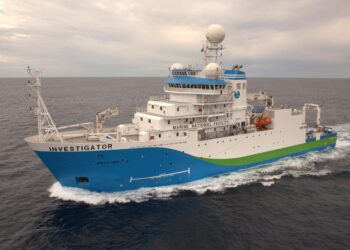
A sign of getting old is hearing yourself use the phrase, “When I was your age . . .”
When I was your age, production tasks were learned through mentorship and repetition, and they were mostly linear, meaning you followed steps from a clear beginning to a clear endpoint. You learned how to do line editing, layout, and paste-up from people who had been doing it the same way for years, if not decades. Sure, there were minor modifications — photo typesetting replaced mechanical typesetting, wax replaced tape, Quark replaced paste-up, and so forth — but the overall process had evolved over years, remained essentially unchanged, and was passed down like a story.
That all started to change as new production techniques, systems, and outputs began to proliferate in the 1990s. No longer was the tried and true sufficient. No longer could the tradespeople rely on traditional approaches and methods. In fact, it has become much more complicated — online editing, supplemental data, video and audio in-line and supplementary, and so on. Vendors, cross-departmental operations, and new rounds of quality control and revision have all added complexity. The scale of most enterprises has simultaneously grown, as new lines of publications and products have been launched. New output modalities — tablet, responsive, audio, video — have been added.
Producing a single issue has become a task of relatively monumental proportions.
Platforms have gained features. Distribution channels have proliferated (email, RSS, social). Technology integrations and e-commerce have become the norm. Early on, it became clear that all the new approaches needed a conductor to keep the various parts of the orchestra in sync. Thus emerged the project manager, and from this, the portfolio manager.
Project management is a familiar role in software companies, but a relatively new one for publishing companies. Now that we are seeing how versioning and software projects affect our businesses, the need to get some control of the process, to install a process even, has become clear. The increased amount of outsourcing also requires many project skills, including service levels, monitoring and management, and clear roles and responsibilities.
As someone once told me, “If there isn’t a process, then it’s all about the process,” meaning that if you don’t know the process, you spend all your time wondering what to do next. Your work is distracted because you’re figuring out the process anew.
The increasing importance of project and portfolio management roles and their key role in forming and running processes also speaks to the multifaceted nature of a modern publishing operation. No longer can silos run on their own, oblivious to what comes before or after. Now, if you want an end-to-end XML workflow, every part of it needs to understand the whole. Now, if you want rapid online publication or new multimedia features, everyone has to know the big picture and all its components.
Project managers (PMs) come in many shapes and sizes, and some put a great deal of emphasis on certification (PMI certification). I’m sure it’s useful, but I believe intrinsic talent and, most importantly, people skills have to accompany any certification. I’ve worked with certificate-bearing PMs who can’t get a project (and its people element) under control. I’ve worked with self-educated PMs who can knock out five large projects without breaking a sweat. Project managers are really people managers. If you can’t manage the people, you can’t manage the project.
Perhaps the greatest value a good PM delivers is that people don’t have to think quite so much, which leads often to disorganized or idiosyncratic approaches. The PM becomes the thinker, allowing regular employees to contribute without having to worry about much else — the schedule, the next meeting, the vendors, the other contributors, the reporting, or the communications aspects.
Communication is also a vital skill for any project or portfolio manager. Gaining alignment among disparate groups is essential, as is communicating enough to calm nerves and instill confidence.
Project managers can face an uphill batter inside organizations, as they are viewed by some as interfering with management authority or role definition. This can lead to clashes that are simply counterproductive. A good PM will get around these by defining roles and responsibilities from the outset, creating appropriate roles for senior managers that allow them to serve the executive function while also keeping them out of the weeds. But the attitude that “we can do this ourselves” permeates many cultures, while these same cultures often have little experience with the benefits of excellent project management. They are caught in a “chicken/egg” dichotomy.
The project management toolkit can work against PMs if implemented poorly or clumsily. Gantt charts and resource dependency matrices and large schematics of interdependencies can make eyes glaze and brains seek shelter. Boiling complexity down into comprehensible and addressable chunks it important. The good PMs do this well. So if you’re feeling like your PM is just showing off, ask for the simple version — ask to eat the elephant one bite at a time.
If you have a good PM, be grateful. You need them. You will need more like them. If you don’t, make an important improvement. It will matter greatly in the short-term and the long run.
Discussion
4 Thoughts on "A Head of Schedule — The Increasing Importance of Project and Portfolio Management"
As a ‘portfolio’ person myself, with a range of projects on the go, this post really resonates.
People and process are key from my perspective – fundamentally we all want to know what we’re doing, where we’re going and how to achieve valuable outcomes.
Technology is great where it becomes part of an improved process, less so when it creates impediments to people working on projects (whether staff or external contacts).
A good PM – in my experience – helps make things easier for those involved. and this really shines through with a supportive executive and good management.
In my work on confusion due to complexity I looked at project management for about a decade. The two simplest results are what I call novelty indexing and looping. Novelty indexing means something like asking how far the project is from what has been done before. The greater the novelty the more likely that significant problems will be encountered. Angela Cochran’s recent post on funder identification is an example.
Looping is the typical problem that occurs. It means that something in the project has to be rethought, redone, redesigned, etc. Traditional PM tools do not provide for looping. (Gantt charts are a hundred years old.) What the problems will be cannot be predicted but that there will be such can be planned and budgeted for. I call this chaos management. the goal is to avoid stress.
The kind of changes you describe are Indicative of a high novelty index.
Kent it’s nice to see this topic brought front and center. In our experience most organizations incorrectly believe that project management is an administrative role. In our experience a great PM is 15-20% administrative and 80-85% communication, risk/issue identification/mitigation/resolution, and change management. They are an extension of a project business sponsor and can take an active role in some level of decision-making all on their own (as discussed/agreed upon with the sponsor in advance). They are drivers! Also, most exceptional PM’s are also analysts at some level – this is why they don’t have to wait for a project team or stakeholder to hand feed them issues/risks – they can see down the pike on their own, aiding the team in being proactive. Thanks for a great post!



